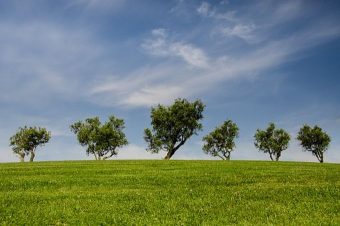
Congress is about to make a decision that could have profound effects on the forests of Wisconsin and the future of American energy. They are considering if the United States should treat “biomass” energy generated from forests — one of the most renewable, recyclable and greenest resources on the planet —as a part of our clean energy solution.
For years, the answer was clear. The U.S., like the rest of the world, had an energy policy that recognized the carbon benefits of forest biomass. Officials understood that much of it comes from wood and paper manufacturing byproducts that would have wasted away in landfills. And they realized that, unlike fossil fuels, strong markets for paper and wood products encourage continued forest management and replanting of trees that will capture and store carbon for generations to come.
Without public notice or scientific basis for a change, government policy shifted in 2010. The Environmental Protection Agency began to regulate greenhouse gases emitted from biomass the same as it did fossil fuels. The EPA committed to revising the policy by 2014, but has yet to do so.
Congress now is trying to break that gridlock and provide much needed clarity, introducing legislation based on well-established science and widely accepted data. In other words, Congress is doing its job.
But this effort faces obstacles from detractors who base their opposition on a flawed view of the way forests and the forest products industry interact. They portray our industries as “destroyers” of forestland, instead of as its most enthusiastic stewards. Fortunately in Wisconsin, we have strong bipartisan support for recognizing biomass as clean energy.
The reality is our forests are flourishing in Wisconsin and throughout America. Indeed, 49% of the land in Wisconsin is forest. According to a 2014 Wisconsin Department of Natural Resources economic report, Wisconsin forests are responsible for 65,000 good-paying jobs in the pulp, paper, forestry, logging and wood products industries, generating more than $24 billion in economic activity. Nationwide, with a strong marketplace for wood products, our volume of growing trees has increased by 50% since the 1950s, according to the U.S. Department of Agriculture.
There is no better example of sustainable biomass energy than the forest product industries themselves. The pulp, paper, packaging, tissue and wood products sectors use biomass to generate roughly two-thirds of our power so we are able to dramatically reduce our fossil fuel purchases. And we do it with leftovers from the manufacturing process — along with wood lost due to insects, disease and fire — that would otherwise decompose naturally emitting the carbon back into the atmosphere.
Even more critically, biomass powers the growth of our most powerful natural “carbon capture” technology, the American forestland, which, in addition to filtering 25% of our drinking water, preserving critical wildlife habitat and protecting the cultural and economic foundation of hundreds of communities and 2.4 million jobs, also offsets 13% of total U.S. CO2 emissions each year.
This fundamental scientific truth is recognized by the European Union and the United Nations’ Intergovernmental Panel on Climate Change, along with 100 nationally recognized U.S. forest scientists, representing 80 top research universities, who wrote to the EPA to make this case. Our government policy should reflect this reality.
Source: jsonline.com



